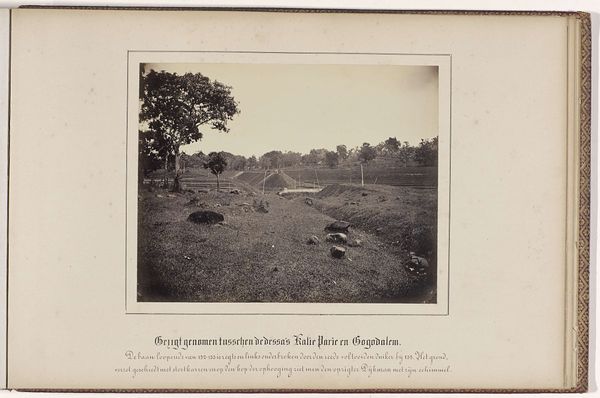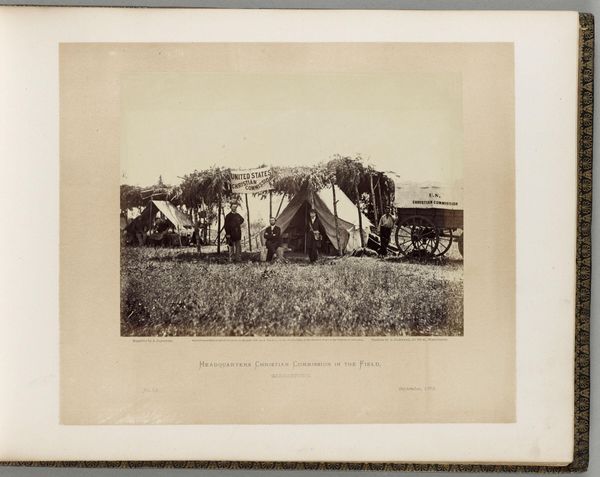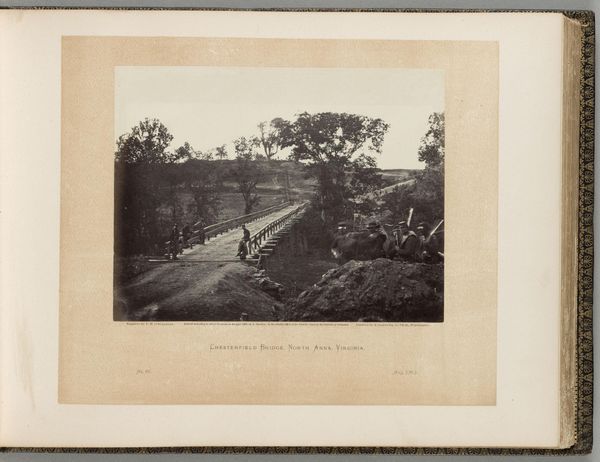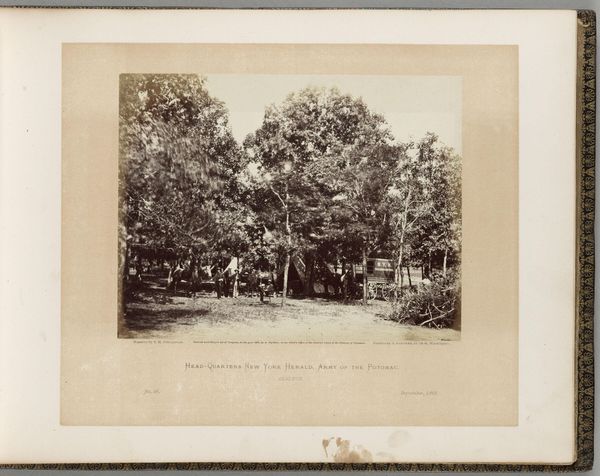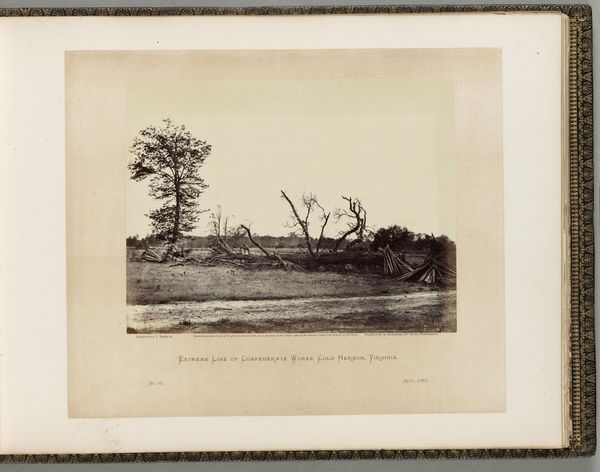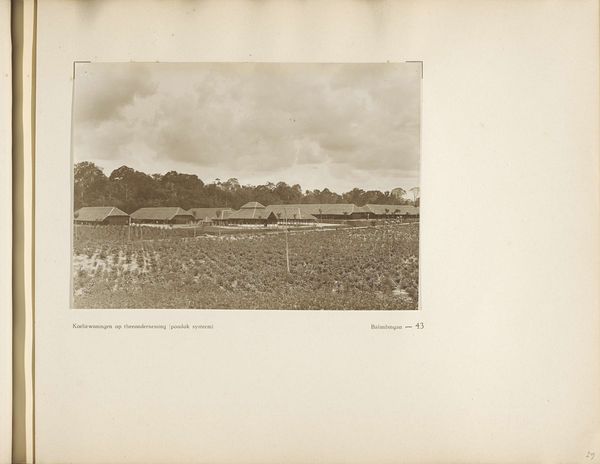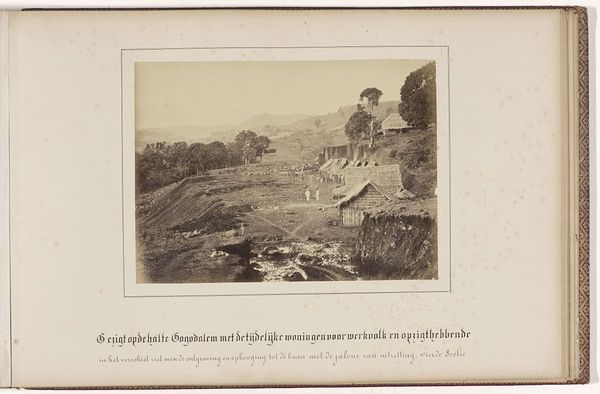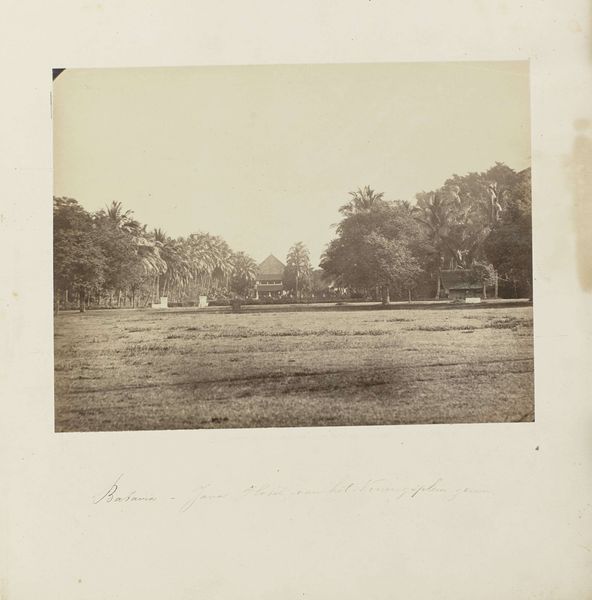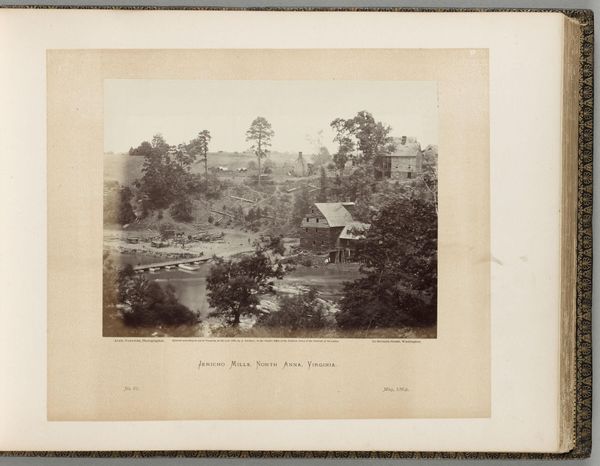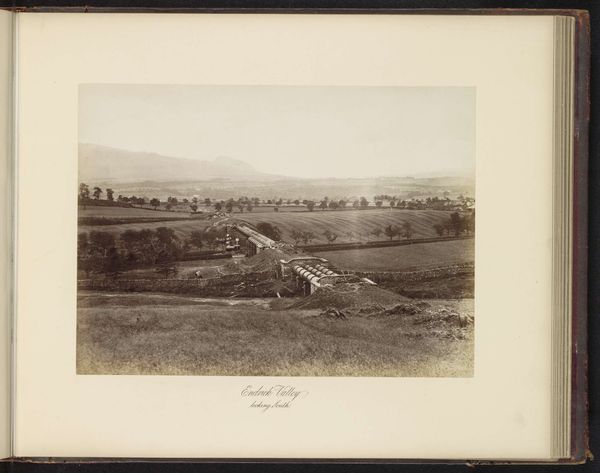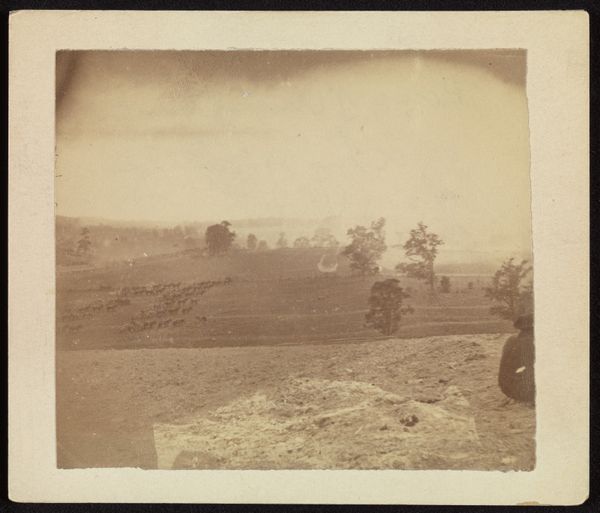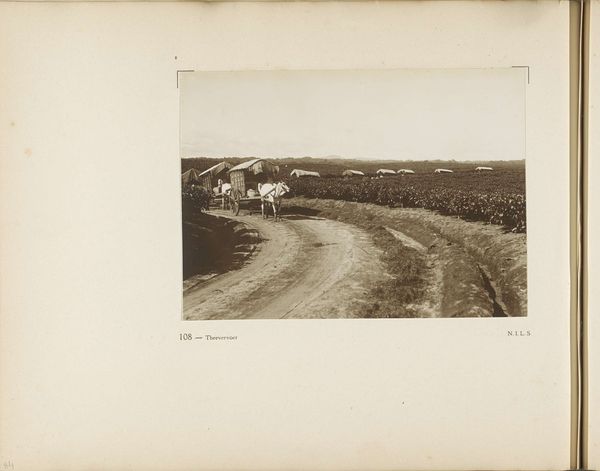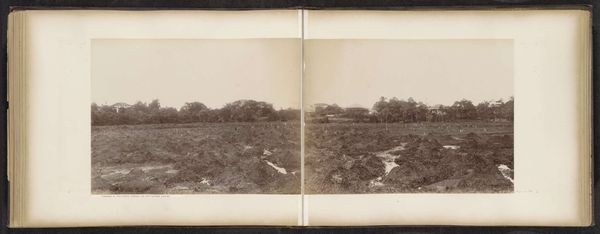
Gezigt op het ravijn tusschen Doplang en Pakis (piket 180.) / De baan is aan weerszijden gereed, moet in het midden eene hoogte van 16.5 bereiken. Voor den hier te maken duiker ziet men de steenbakkerij. Standplaats regts van piket 179. Rigting genomen naar dessa Pakis 1867 - 1868
0:00
0:00
daguerreotype, photography
#
16_19th-century
#
landscape
#
daguerreotype
#
photography
#
orientalism
Dimensions: height 189 mm, width 239 mm, height 305 mm, width 450 mm
Copyright: Rijks Museum: Open Domain
This photograph, taken by Woodbury & Page, shows the landscape between Doplang and Pakis. But it's not just a pretty picture. Look closely, and you'll see the marks of industry all over it. The image captures the construction of a railway, a massive feat of engineering and labor. We see the raw earth cut away to make way for the tracks. The photograph itself is a product of industrial processes. Woodbury & Page were known for their use of the Woodburytype, a photomechanical process that allowed for mass production of high-quality images. This photograph then, is more than just a landscape. It's a document of human intervention, capturing the transformation of the natural world through the application of labor and industrial technology. It reminds us that even seemingly simple images can hold complex stories about the relationship between people, materials, and the built environment.
Comments
No comments
Be the first to comment and join the conversation on the ultimate creative platform.
